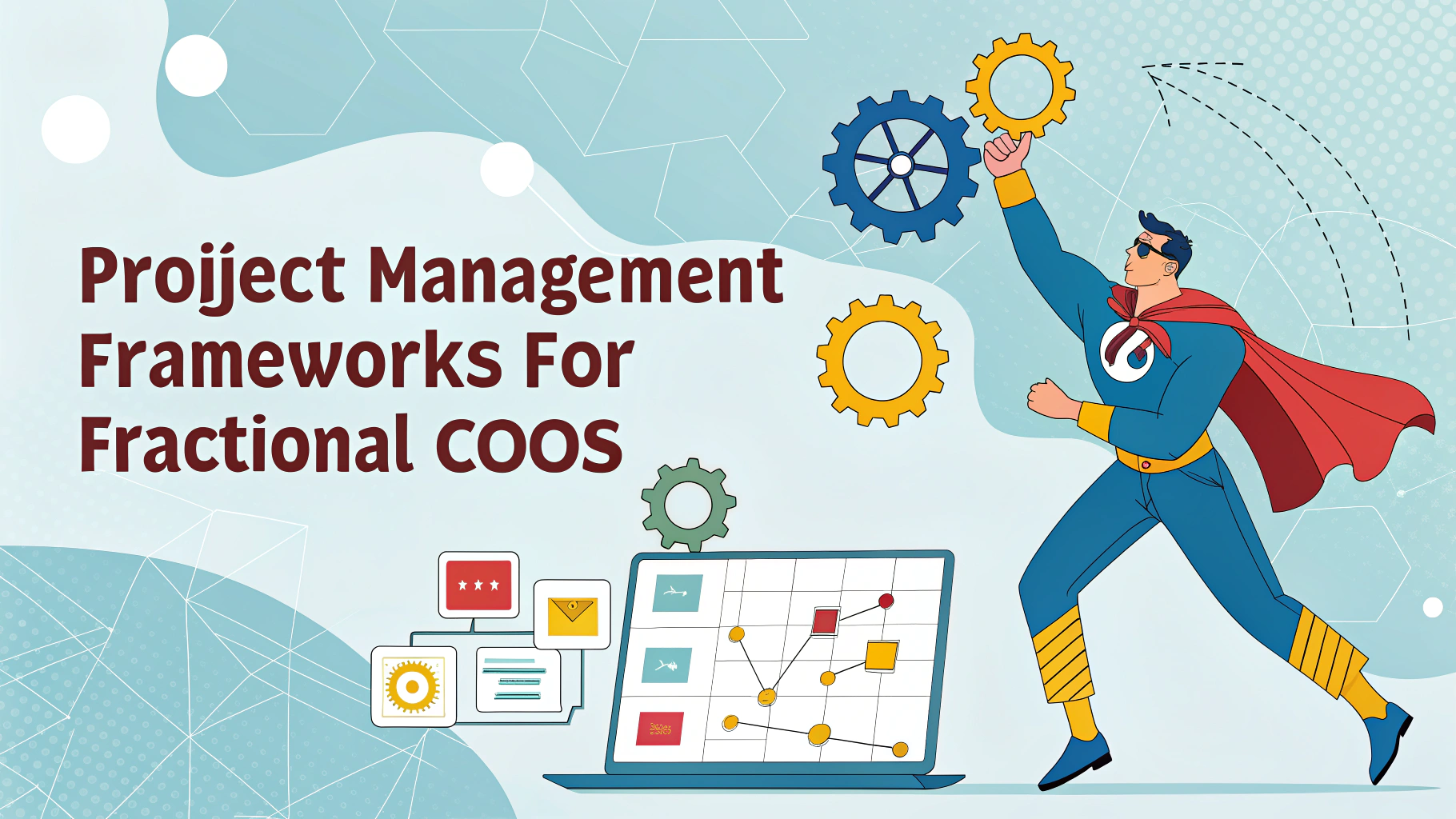Measuring success for fractional COOs requires tracking specific metrics that demonstrate value and impact across different industries.
Understanding these metrics helps organizations evaluate the effectiveness of their fractional leadership and make data-driven decisions about their executive strategy.
This guide breaks down the key performance indicators (KPIs) that define successful fractional COO engagements.
Financial Impact Metrics
- Revenue growth percentage
- Cost reduction achievements
- Operating margin improvements
- Cash flow optimization
- Return on investment (ROI) from operational initiatives
Operational Efficiency Metrics
- Process cycle time reduction
- Employee productivity rates
- Resource utilization improvements
- Quality control measurements
- Supply chain optimization results
Project Management Success Rates
| Metric | Target Range |
|---|---|
| Project completion rate | 90-95% |
| On-time delivery | 85-90% |
| Budget adherence | ��5% |
Team Development Indicators
- Employee retention rates
- Training program completion rates
- Internal promotion percentages
- Team satisfaction scores
- Cross-functional collaboration metrics
Technology Implementation Metrics
Track system adoption rates, user satisfaction scores, and ROI on technology investments.
Risk Management Effectiveness
- Compliance violation reduction
- Safety incident frequency
- Audit performance scores
- Risk mitigation success rate
Customer-Centric Metrics
- Customer satisfaction scores (CSAT)
- Net Promoter Score (NPS)
- Customer retention rates
- Service level agreement (SLA) compliance
Documentation and Process Improvement
- Standard Operating Procedures (SOPs) created
- Process documentation completion rate
- Training material development
- Knowledge transfer success metrics
Measuring Long-term Success
Track sustainability of implemented changes through quarterly reviews and annual assessments.
Monitor the organization’s ability to maintain improvements after the fractional COO engagement ends.
Establish clear handover protocols and succession planning metrics for permanent leadership transition.
Next Steps for Implementation
Contact professional fractional COO services through platforms like CeoX or Interim Execs to discuss specific metrics for your industry.
Schedule a consultation to develop a customized metrics dashboard for your organization’s needs.
Begin baseline measurements before the fractional COO engagement to enable accurate progress tracking.
Stakeholder Communication
- Regular progress reporting frequency
- Stakeholder feedback scores
- Executive team alignment metrics
- Board presentation effectiveness
Strategic Planning Performance
- Goal achievement rates
- Strategic initiative completion
- Market position improvements
- Competitive advantage metrics
Change Management Effectiveness
- Change adoption rates
- Employee resistance levels
- Implementation success scores
- Organizational readiness metrics
Scalability Indicators
- Growth capacity measurements
- Infrastructure scalability scores
- Resource flexibility metrics
- Expansion readiness assessments
Innovation and Continuous Improvement
Process Innovation
- New process implementation rate
- Efficiency gains from innovations
- Innovation ROI measurements
Cultural Impact
- Innovation mindset adoption
- Continuous improvement participation
- Employee suggestion implementation rate
Maximizing Fractional Leadership Impact
Establish regular metric review cycles to ensure continuous alignment with organizational goals.
Implement feedback loops between fractional leadership and permanent team members.
Create sustainable measurement systems that outlast the fractional engagement.
Moving Forward with Confidence
Transform metrics into actionable insights for ongoing operational excellence.
Leverage data-driven decision-making to guide future organizational strategy.
Build upon established frameworks to ensure lasting positive impact from fractional leadership initiatives.
FAQs
1. What key performance indicators (KPIs) should be used to measure a fractional COO’s success?
Key performance indicators include operational cost reduction, process efficiency improvements, employee productivity metrics, project completion rates, customer satisfaction scores, and revenue growth attributable to operational improvements.
2. How does success measurement differ between industries for fractional COOs?
Success metrics vary by industry – manufacturing focuses on production efficiency and quality control, tech companies prioritize scalability and product development timelines, while service industries emphasize customer satisfaction and delivery metrics.
3. What is the typical timeframe to see measurable results from a fractional COO?
Most organizations see initial results within 3-6 months, with significant improvements visible within 6-12 months, depending on the scope of operational challenges and organizational size.
4. How should ROI be calculated for a fractional COO engagement?
ROI calculation should include cost savings from operational improvements, revenue increases from enhanced efficiency, reduced full-time staffing costs, and the value of implemented systems and processes versus the fractional COO’s fees.
5. What percentage of operational improvement is considered successful for a fractional COO?
Industry standards typically consider a 15-30% improvement in targeted operational metrics as successful, though this can vary significantly based on the organization’s starting point and specific goals.
6. How do you measure the long-term impact of a fractional COO’s initiatives?
Long-term impact is measured through sustained operational improvements, documented processes and procedures, team capability enhancement, and the organization’s ability to maintain efficiency after the engagement ends.
7. What are the most common success metrics for startups versus established companies?
Startups typically focus on scalability metrics, burn rate reduction, and process establishment, while established companies prioritize cost reduction, efficiency improvements, and organizational restructuring metrics.
8. How frequently should success metrics be evaluated during a fractional COO engagement?
Success metrics should be evaluated monthly for tactical goals and quarterly for strategic objectives, with formal reviews conducted at predetermined milestones throughout the engagement.
9. What role does employee satisfaction play in measuring fractional COO success?
Employee satisfaction and engagement scores are crucial indicators, typically measured through regular surveys, reduced turnover rates, and improved productivity metrics.
10. How do supply chain improvements factor into fractional COO success metrics?
Supply chain improvements are measured through reduced lead times, lower inventory costs, improved supplier relationships, and enhanced delivery performance metrics.








